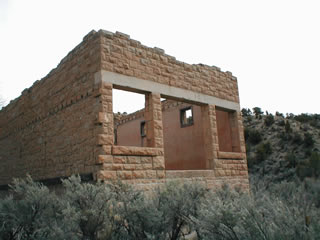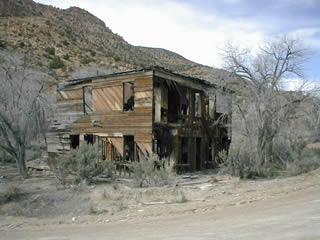In 1915, Richard Neslin was fired. The name of the town was now changed to Sego. This was due to the high amount of sego lillies in the area. The sego lily is now the Utah state flower.
Problems started in the area from the beginning. The water table began to fall rapidly. Many other problems also troubled the operation. Many of the miners were not paid for up to a year. But they were allowed to get food and supplies from the company general store. This situation convinced them to join the mMine Workers Union in 1933.
On November 1, 1947, the mine closed for good. A property auction was then held in Moab. Many of the buildings were moved off of the site. But many great building still remain today. There are also some indain petroglyphs nearby too.
Sego is located just north of exit 185 (Thompson Springs exit) on I-70.





